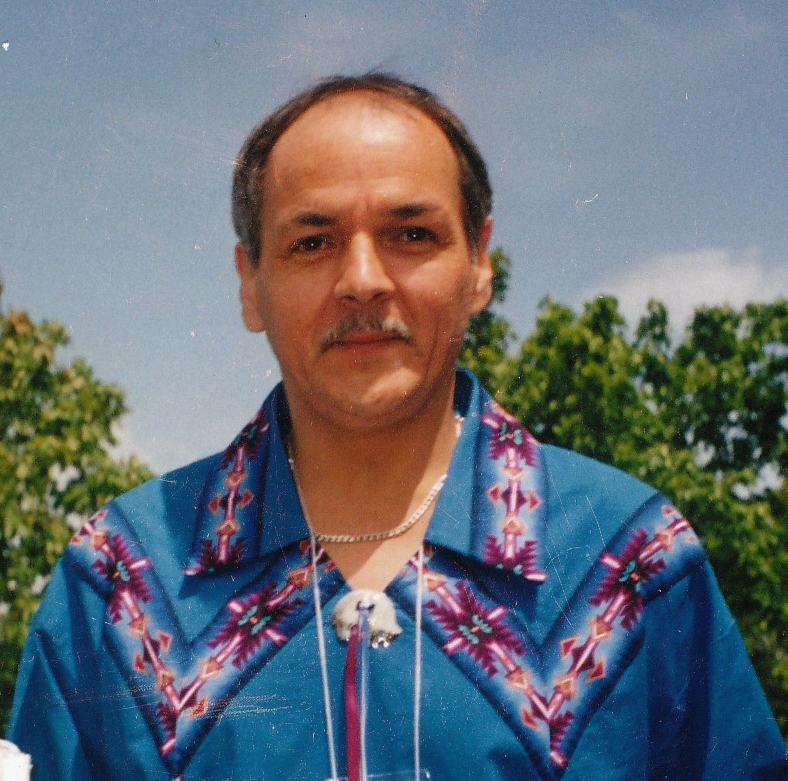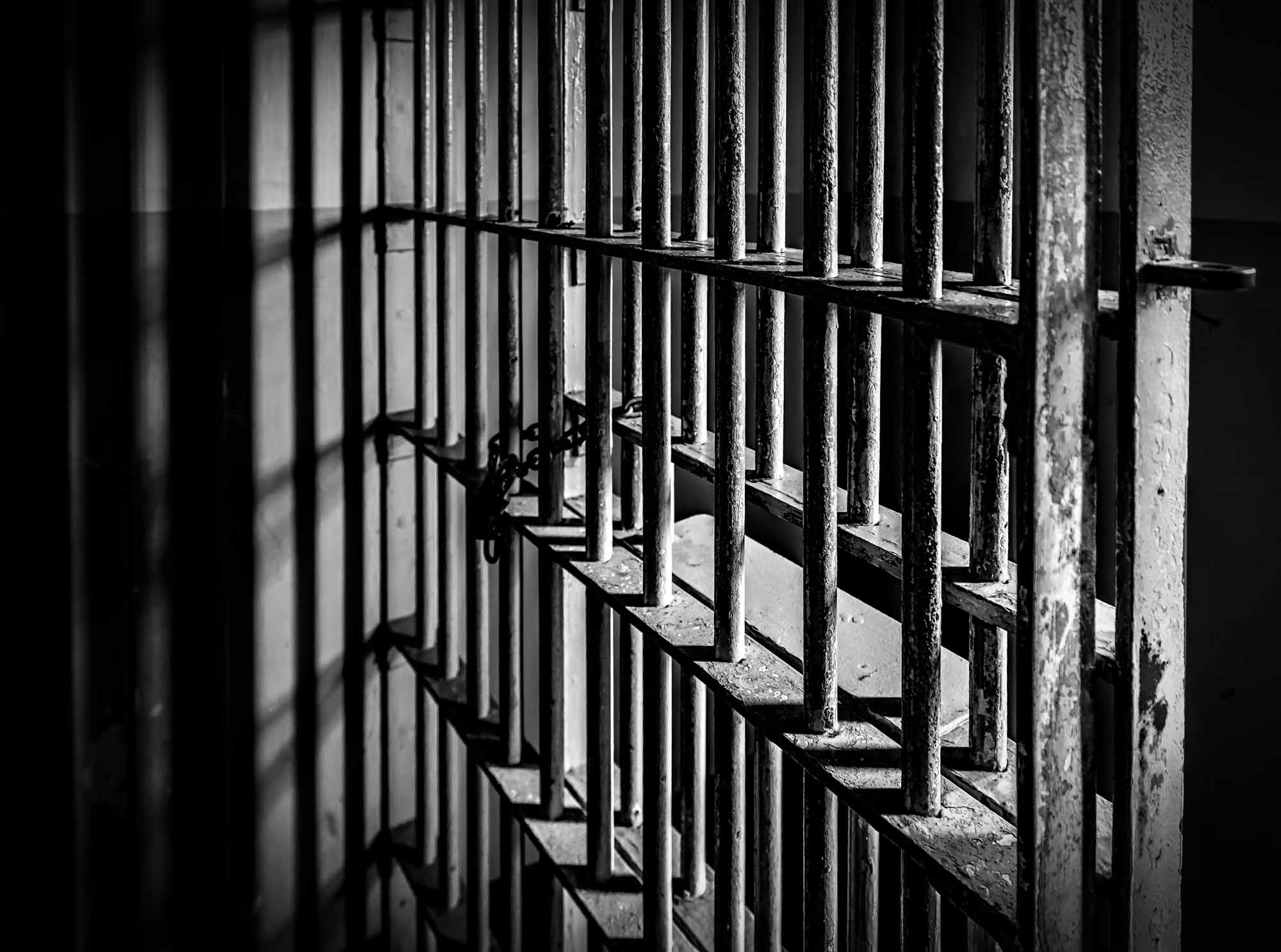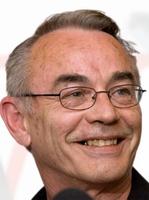
The unearthing of wrongly convicted offenders has been arguably the dominant legal development in Canada over the past half-century. A nationwide network of lawyers, journalists and legal organizations has doggedly pursued cases of potential wrongful conviction, battling in the courts and lobbying in public to win the release of offenders who have, in some cases, spent decades behind bars.
Marshall Case Sparks Change
Before the 1983 reversal of a murder conviction in R. v. Donald Marshall, little credence had been given to the notion that serious miscarriages of justice take place at all in Canada, let alone that dozens of innocent people might be languishing behind bars. Over the ensuing 30 years, that belief was demolished. In the wake of Marshall’s exoneration, more than 20 convicted murderers have been freed on the basis of serious doubts about the reliability of evidence and trial fairness in their cases.

The most significant boost to the cause came with the advent of DNA testing in the 1980s. In the years since, when DNA evidence surfaces that can scientifically exclude an offender as being the source, state officials almost invariably halt a prosecution and release the offender.
Canada a Pioneer
Canada is widely perceived as a pioneer in detecting and correcting cases of wrongful conviction. A political-legal template has evolved that is the norm in these cases. First, the defendant and his advocates try to obtain reconsideration within the court system. Should this prove insufficient, sustained pressure is typically exerted on politicians and justice bureaucrats by crusading lawyers, legal organizations that advocate for the wrongly convicted, as well as the news media.

Courts as high as the Supreme Court of Canada have cited the significance of prominent wrongful conviction cases and the reasons that lay behind them. In a seminal 2001 judgment, United States v. Burns, the Supreme Court cited wrongful convictions as a primary reason Canada should refuse to extradite defendants to countries that employ the death penalty, unless the extraditing government offers assurances that the defendant will not be put to death.
Canada is also one of a small number of countries that has methodically probed the nature of some of these miscarriages of justice through a public inquiry process. Inquiries of this kind have been held in the cases of Donald Marshall Jr., Guy Paul Morin, Thomas Sophonow, James Driskell and David Milgaard. Two independent inquiries were held into a trio of Newfoundland cases: Gregory Parsons, Ronald Dalton and Randy Druken. Together, these probes have yielded hundreds of recommendations aimed at reforming police, prosecutorial and government procedures to ensure that future wrongful convictions can be avoided.
As laudable as those efforts may have been, however, Canada is still criticized for the hurdles that lie in the path of offenders seeking exoneration. Typically, it takes such an offender from three to eight years before adequate fresh evidence can be found and placed before courts and governments in such a way that results in a new trial or outright exoneration.
Causes of Wrongful Convictions
Recurring problems include faulty eyewitness identification; over-reliance on scientifically questionable evidence; and police and prosecutorial tunnel vision.
Advances in forensic science have helped reduce the prosecutorial use of worrisome scientific evidence such as hair samples. Likewise, eyewitness testimony has increasingly been exposed as a grave potential danger, helping to dispel the mystique and powerful hold this category of evidence has on public consciousness.
Tunnel vision, however, has proved to be a more stubborn foe. The nature of a police investigation lends itself to police fixating on the most likely suspect and then marshalling their efforts to construct a rock solid case for his or her prosecution. Building a case that can be proved to the criminal standard of “beyond a reasonable doubt” often requires considerable effort, providing a powerful enticement for police to assemble every piece of evidence possible while simultaneously downgrading or ignoring other possible suspects.
A prominent cause of wrongful convictions is concocted testimony from prison inmates who claim to have heard a fellow inmate confess to a crime. In several notorious wrongful convictions cases, it has emerged that police or prosecutors offered leniency to these witnesses in their own criminal problems, throwing the truthfulness of their testimony into doubt.
Other common causes include: inept or inadequate representation by defence counsel; failure by state authorities to disclose evidence prior to trial that could contribute to an acquittal; perjured testimony; judicial bias against the offender; evidence at trial by the Crown expert witnesses that goes beyond their area of expertise; contaminated evidence; false confessions by defendants due to pressure or trickery by police interrogators; and destruction of evidence once the court process is finished, complicating any exoneration efforts in subsequent years.
Another cause that is achieving increased recognition involves lenient plea bargains offered by the Crown. These offers may prove so attractive to an innocent defendant who faces a lengthy prison term that he or she feels compelled to plead guilty.

Advocacy Organizations
The dominant advocacy organization in Canada is the Association in Defence of the Wrongly Convicted (AIDWYC). Founded in 1993, it identifies and advocates on behalf of cases it deems probable wrongful convictions. It also provides legal education about the causes of wrongful convictions and presses for reform. Volunteer lawyers have reviewed hundreds of cases since AIDWYC was founded. By 2015, they had successfully helped engineer 19 exonerations involving individuals who had cumulatively spent more than 185 years in prison.
AIDWYC was co-founded by Win Wahrer, a non-lawyer who had championed Guy Paul Morin's innocence, defence lawyer James Lockyer and Rubin “Hurricane” Carter, himself an exoneree in a notorious triple murder case in New Jersey. Carter eventually broke away from AIDWYC when it declined to take a sufficiently strong stand against the judicial appointment of a prosecutor involved in the Guy Paul Morin case (see below). Carter launched a new advocacy organization, Innocence International.
Chapters of the US-based Innocence Project also carry on wrongful conviction work under the auspices of various Canadian university law schools.

Means of Exoneration
Under the Criminal Code of Canada, an application can be made to the federal Minister of Justice to exercise the Royal Prerogative of Mercy. If the Minister concludes that the case likely represents a miscarriage of justice, he or she may direct a new trial or refer the matter to the court of appeal in the province where the conviction was registered.
The court of appeal has the power to enter either an acquittal, a stay of proceedings (giving the Crown one year to reactivate a prosecution), order a new trial, or leave the conviction intact. The Crown then has an option to re-prosecute, launch a new trial but enter no evidence, withdraw the charge or stay proceedings.
Continuing Problems
Advocates for the wrongfully convicted express discontent with these procedures, including the fact that it is up to a government minister to decide whether a case is referred for appellate court review. The United Kingdom’s Criminal Cases Review Commission (CCRC) is frequently cited as a superior model. The CCRC operates at arm’s length from government and can undertake a case investigation on its own rather than waiting until it receives applications. It processes many more cases per year than its Canadian counterpart.
Other objections to the process include the relatively modest budget granted to the federal case review body; the fact that it rarely deals with lesser offences than murder; and the inordinate length of time it takes for applicants to clear the hurdles implicit in the process and obtain an exoneration.
Compensation for wrongfully convicted individuals also remains a contentious issue. Some provinces will not compensate an individual unless he or she has been found “factually innocent” — in other words, proven innocent via definitive evidence such as DNA, or via the conviction of another person for the crime. As a result, offenders whose quest for exoneration simply ends as a result of the Crown deciding not to pursue a retrial typically do not qualify for compensation.
On a more abstract level, advocates for the wrongly convicted are apprehensive about the development of “wrongful conviction fatigue,” defined as a widespread feeling that wrongful convictions are a part of the past, in part because public inquiries have cleared up most of the root causes.
Famous Cases
Donald Marshall Jr.
A Mi’kmaq from Nova Scotia, Donald Marshall Jr. was convicted in 1971 of the murder of a friend, Sandy Seale. Marshall was released from prison in 1982 after police responded to public pressure by taking a fresh look at his case. The Nova Scotia Court of Appeal overturned his conviction in 1983. Shortly afterward, a local ne’er-do-well, Roy Ebsary, was convicted of manslaughter in the Seale killing.
A 1990 public inquiry concluded that witness statements had been unreliable, police and prosecutors had performed inadequately and that elements of systemic racism contributed to Marshall’s wrongful conviction. The inquiry also criticized the Nova Scotia Court of Appeal for suggesting in a judgment that Marshall had been partially the author of his own misfortune. Marshall was awarded $1.5 million in compensation. He died in 2009 at the age of 55.
Guy Paul Morin
Guy Paul Morin was arrested in 1985 for the murder of his nine-year-old next-door neighbour, Christine Jessop. Morin was acquitted by a jury in 1986, but the Supreme Court of Canada ordered a retrial based on errors made by his trial judge. After more than two years of courtroom skirmishing, Morin was convicted in 1992. A public outcry helped him obtain bail pending his appeal. On the eve of his appeal, in early 1995, DNA that had been found on the victim’s underwear excluded Morin as a suspect. Morin was exonerated and granted $1.25 million in compensation.
The Kaufman Inquiry into his wrongful conviction concluded that the case featured an array of police and proseutorial tunnel vision, undisclosed evidence, stereotypical thinking about the defendant’s purported eccentricity, false testimony from jailhouse inmates and contaminated forensic evidence.
David Milgaard

David Milgaard was convicted in 1970 of murdering a Saskatoon nursing assistant, Gail Miller. He was unsuccessful in appeals to the Saskatchewan Court of Appeal and the Supreme Court of Canada. Many years later, thanks largely to his mother, Joyce, a clamour arose surrounding his case. In 1991, Justice Minister Kim Campbell responded to pressure by asking the Supreme Court to review his conviction again. The court set aside the conviction, and in 1997, Milgaard was exonerated on the basis of DNA evidence that could now be tested thanks to advances in laboratory techniques. Milgaard was awarded $10 million in compensation for his years in prison. In 1999, Larry Fisher was found guilty of the rape and murder of Miller.
Robert Baltovich
Robert Baltovich was convicted in 1992 of murdering his girlfriend, Elizabeth Bain. The Crown’s circumstantial case was undermined by changing witness testimony, questionable police photo lineups, and allegations of police tunnel vision. With the help of AIDWYC, Baltovich was released after eight years behind bars.
After hearing his appeal, the Ontario Court of Appeal ordered a new trial. However, the Crown abandoned its attempt to prosecute Baltovich on the eve of his retrial on the grounds that pre-trial evidentiary rulings had deprived it of key evidence. In 2008, the trial judge directed the jury to acquit Baltovich. As of 2015, Baltovich was suing the Ontario government for compensation.
Steven Truscott

Steven Truscott was convicted in 1959 of sexually assaulting and murdering Lynne Harper. Although he was only 14 years old at the time, Truscott was tried as an adult and sentenced to hang. After four months on Death Row, his sentence was commuted to life imprisonment. Truscott was paroled in 1969 and began a new life in anonymity in Guelph, Ontario. Almost 40 years later, emboldened by a series of wrongful convictions that had been exposed across Canada, Truscott emerged from concealment in search of exoneration.
With AIDWYC lawyers backing his case and a raft of new evidence that shed doubt on the time and circumstances of the victim’s death, Truscott won a review of his case through the process provided for in the Criminal Code. The Ontario Court of Appeal overturned Truscott’s conviction in 2007 and entered a verdict of acquittal. Truscott was granted $6.5 million in compensation by the Ontario government.
Thomas Sophonow

Thomas Sophonow was tried three times for the 1981 murder of donut-store employee Barbara Stoppel, and imprisoned for a total of four years. Police photo lineups figured prominently in what was ultimately shown to be a wrongful conviction. Sophonow’s first trial ended in a hung jury. He was convicted after his second and third trial, but both verdicts were later overturned by the Manitoba Court of Appeal on the basis that his defence had not been adequately conveyed to the jury. The Court of Appeal concluded that it would be improper to try him a fourth time and registered an acquittal in 1985.
Sophonow pressed for a full exoneration and in 2000, Winnipeg police finally conceded that he had clearly not been the killer. An inquiry conducted by retired Supreme Court of Canada Judge Peter Cory later found numerous errors in the investigation and prosecution. Cory recommended that Sophonow be granted almost $2.6 million compensation.
James Driskell
A Winnipeg man, James Driskell was convicted in 1991 in the fatal shooting of his friend Perry Harder. Driskell’s conviction came into doubt many years later when hair samples thought to be from Harder and found in Driskell’s van were retested and proved not to have belonged to the victim. The unreliability of a key Crown witness and inadequate disclosure of evidence by the Crown figured prominently in Driskell’s subsequent application under the Criminal Code.
In 2005, federal Justice Minister Irwin Cotler quashed Driskell’s conviction and ordered a new trial. Rather than hold a retrial, the Manitoba government opted to stay Driskell’s murder charge, thereby depriving Driskell of an opportunity to win a full acquittal. Manitoba offered Driskell $250,000 in compensation. He sued the province instead for $20 million, eventually settling the case for $4 million.
Anthony Hanemaayer
One of just a handful of notorious wrongful convictions that did not involve murder, Anthony Hanemaayer pleaded guilty in 1989 to assaulting a 15-year-old girl whose home he had allegedly broken into in 1987. The Toronto man served out his sentence of two years less a day — obtained in a plea bargain offered by the Crown.
In 2006, serial killer Paul Bernardo made a jailhouse confession to a series of crimes he had committed many years earlier. One of these involved the home where the victim lived. Approached by defence lawyers who had learned of the confession, Hanemaayer reiterated his innocence and said he had pleaded guilty only because he had anticipated a much longer prison sentence if he were convicted following a full trial. The details Bernardo supplied left little doubt that he had been the true perpetrator. The Ontario Court of Appeal formally acquitted Hanemaayer in 2008 and offered an apology for his ordeal. As of 2015, he was suing the Ontario government for compensation.
William Mullins-Johnson
A First Nations member from northern Ontario, William Mullins-Johnson was convicted of murder in the sex slaying of his four-year-old niece and spent 12 years in prison. He won a review of his case after testimony from a now-discredited forensic pathologist, Dr. Charles Smith, came into serious question in connection with a number of cases involving child deaths. In an unusual move, the Crown asked the Ontario Court of Appeal in 2007 to acquit him. Mullins-Johnson received $4.25 million in compensation.
Romeo Phillion
Romeo Phillion served 32 years behind bars for the 1967 stabbing death of Ottawa firefighter Leopold Roy. Police charged Phillion with the crime only years later, after Phillion confessed to the murder while in custody on an unrelated robbery charge. He quickly recanted, but the original confession proved to be enough for the Crown to obtain a murder conviction.

In 2003, a group of law students at York University’s Innocence Project sought a new trial on the basis of a previously undisclosed police report that asserted Phillion had actually been 200 kilometers away from Ottawa on the day that Roy was murdered. The Ontario Court of Appeal struck down Phillion’s conviction in 2009 and ordered a new trial. Based largely on the amount of time that had passed, the Crown did not proceed to a retrial. However, it refused to compensate him, arguing that his earlier confession had contributed to his wrongful conviction. In 2015, Phillion was suing Ontario for compensation when he died, aged 76.
Others
Other wrongful murder convictions that resulted in lengthy prison sentences, or long-delayed justice, include those of Richard Brant (New Brunswick), Leighton Hay (Ontario), Clayton Johnson (Nova Scotia), Dinesh Kumar (Ontario), Gregory Parsons (Newfoundland), Tammy Marquardt (Ontario), Sherry Sherret-Robinson (Ontario), Ron Dalton (Newfoundland), Randy Druken (Newfoundland), Kyle Unger (Manitoba) and Erin Walsh (New Brunswick).
(See also Criminal Law and Criminal Investigation.)

 Share on Facebook
Share on Facebook Share on X
Share on X Share by Email
Share by Email Share on Google Classroom
Share on Google Classroom